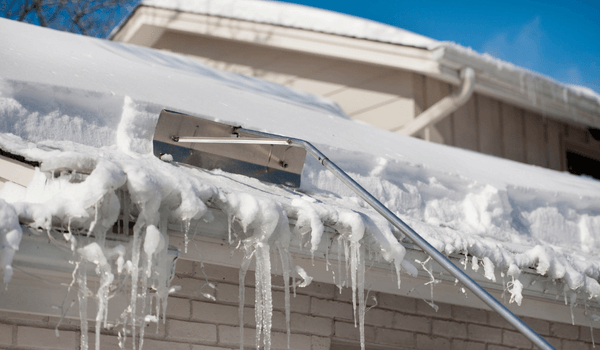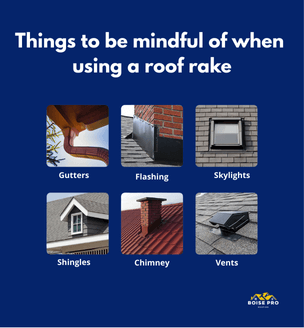

It?s called a roof rake, but it?s not your garden variety
If you?ve ever seen your neighbor tugging a strange, extra-long contraption across their rooftop in the dead of winter, you might have wondered what on earth it was?and why on earth they were doing that in the snow. Well, meet the roof rake, a specialized roof snow removal tool that prevents ice buildup, reduces potential leaks, and keeps your roof in good shape after a blizzard. It might share a name with your garden rake, but it?s a completely different animal.
In this guide, we?re going to break down exactly what a roof rake is, why it?s handy, and how to use one safely (and smartly) during those icy, snowy months. We?ll also touch on when you might need one, how to store it, and what to watch out for when you?re shopping for one. Grab a mug of something warm and cozy up while we talk all things roof rakes snow, so you?ll never be left scratching your head when someone says ?rake for roofing.?
The Basics: Why Do You Need a Roof Rake?
Before we get into the details, let?s talk about why roof rakes exist at all. Picture a heavy snowfall piling up on your roof. Sure, your roof is designed to handle a certain amount of weight, but left unchecked, heaps of snow can lead to issues like ice dams, leaks, or even structural strain?especially on older or lower-pitched roofs. A ?roof rake? is just what it sounds like: a tool that helps you pull, push, or scrape snow off your roof from the ground, so you don?t have to risk your neck climbing up there yourself.
Think of it as damage prevention. Instead of letting winter weather do its worst and then paying for pricey repairs, you proactively remove the snow accumulation, reducing the chance of water infiltration, buckling shingles, or major ice dams. In short, a roof rake can save you a ton of headaches (and money) after a serious snowstorm.
Read More: Preventative Roof Maintenance in Wichita: Tips for a Longer Roof Life
Roof Rake 101: Form and Function
A roof rake is usually made up of a long, extendable pole (often aluminum or fiberglass) with a wide blade or paddle at the end. That wide portion is the part that actually scoops or drags snow downward, off the edge of the roof. This design keeps you safely on the ground?no ladder required in most cases?while you angle and maneuver the rake for roofing across the snowy surface above you.
Compared to the rake in your shed you use for fall leaves, a roof rake is bigger, flatter, and angled differently. It?s also designed to extend quite a distance, so you can reach a second-story roof from your yard or driveway. In some models, you can attach a ?slide? made of tarp-like material that helps the snow glide off more easily, which can be a game-changer for folks dealing with heavy, wet snow.
How To Use a Roof Rake Safely
While a roof rake is definitely safer than climbing onto a slippery surface with a shovel in hand, you still need to be smart about how you use it. After all, you?re dealing with a lot of weight coming off the roof?sometimes in chunks that can knock you over if you?re standing directly below it.
- Check Your Surroundings: Make sure there are no icicles poised to fall on your head. Keep pets and kids out of the area, and be mindful of power lines or tree branches that might get in the way.
- Work in Moderation: You don?t have to scrape every single inch of snow off the roof?just the top layers that could cause a problem or weigh things down unnecessarily. Clearing about three to four feet from the roof?s edge is often enough to reduce ice dam risk.
- Pace Yourself: Tugging at heavy snow is tiring work. Keep your feet planted, and don?t jerk the rake too forcefully. Use smooth, deliberate motions to pull the snow toward you.
- Watch for Falling Snow: Try not to stand directly underneath the section you?re raking. Move off to the side so the snow slides down in front of you, not on top of you.
- Mind the Roof Surface: If you?re using a metal-edge rake, be gentle near the shingles. You don?t want to scrape or gouge them, which can lead to shingle damage and leaks come spring.
When Should You Use a Roof Rake?
Not every snowfall calls for your roof rake. If you only get an inch or two, it?s usually not a big deal. But if you?re looking at a hefty storm that drops a foot of snow or more, especially heavy, wet snow, that might be the time to reach for your roof snow removal tool. Another big sign is the formation of ice dams?those ridges of ice that build up along the eaves and trap water behind them. If you see thick icicles or water creeping under your shingles, it?s a sign that clearing at least some snow could help.
Some homeowners rake whenever there?s more than six inches of accumulation, just to keep on top of things. Others hold out until the snow is significantly piled up or they notice dripping, ice buildup, or changes in the interior temperature upstairs. How often you rake depends on your local climate, the shape and angle of your roof, and your personal comfort level.
Picking the Right Roof Rake for Roofing
Just like any tool, roof rakes come in all shapes, sizes, and materials. Some are heavier but sturdier; others are lightweight yet might not hold up for many seasons. Here are a few tips on choosing the right rake:
- Check the Handle Length: Consider how tall your home is and how far you?ll need to reach. Some rakes can extend over 20 feet, while others might just give you 10 to 15 feet of reach. Go for adjustable poles if you want more versatility.
- Blade vs. Slide: Traditional roof rakes have a wide, flat blade. Others use a special snow-slide system that slices through the snow, letting it tumble down a plastic chute. Both work well, but the slide system often makes it easier to deal with heavy or deeply accumulated snow.
- Weight and Material: Aluminum rakes are common because they?re relatively light but sturdy enough to handle big loads of snow. Fiberglass might be a bit pricier but can offer extra durability if you?re using it a lot.
- Grip and Comfort: Look for handles with some sort of padded or ergonomically shaped grip. If you?re removing snow for a while, that little bit of cushion can save your hands from blisters.
Storage and Maintenance
A roof rake is one of those tools you might only use once or twice a year, so figuring out a good storage plan is important. Some folks hang them on a garage wall or break them down into smaller sections that fit neatly on a shelf. The key is to keep it out of damp areas where rust could form on metal parts. If yours has a tarp slide attachment, make sure it?s fully dry before you stash it away?mold is no one?s friend.
Maintenance-wise, give your rake a quick check at the start of winter. Tighten any screws, make sure the extendable parts slide smoothly, and inspect the blade for dents or burrs that could catch on your shingles. If you see any sharp edges, you can usually file them down. A little TLC each year goes a long way in prolonging your rake?s lifespan.
Roof Rake Myths to Debunk
There are a couple of myths floating around about roof rakes, so let?s clear the air:
- Myth #1: ?I Only Need It in Very Cold Climates.? Even if you live in a place that doesn?t get severe storms, a freak blizzard can happen. If your roof pitch is shallow or your area tends to get wet, heavy snow, having a roof rake handy can prevent major damage.
- Myth #2: ?A Leaf Rake Works Just as Well.? They might share the word ?rake,? but that?s about all. A garden or leaf rake simply doesn?t have the reach or the structural design needed to drag snow safely off your roof.
- Myth #3: ?I Have a Pitched Roof, So I Don?t Need One.? While steep roofs shed snow more easily, ice dams can still form at the edges. A roof rake can help pull down problem areas before they cause leaks.
Read More: 11 Common Myths and Facts About Attic Ventilation
Alternatives to a Roof Rake
If raking snow off your roof isn?t your idea of winter fun, you do have some other options. You might install heated cables along the eaves to melt away ice dams. Proper insulation and ventilation in your attic can also help prevent those pesky ice ridges. And if the snow is just way too much, calling in a professional roofing or snow removal service can spare you the effort and ensure the job?s done without risk to you or your roof.
Quick Tips for Roof Snow Removal Tool Success
Instead of bullet points, let?s just lay it out in a smooth flow:
If you?re planning to use a roof rake consistently, consider investing in a model that?s built for heavy-duty use. The last thing you want is to have your pole bend under the weight of that first major storm. Also, try to tackle snow removal sooner rather than later?letting it build up to epic heights makes the job twice as hard. And remember: never stand directly under the section you?re raking. Shifting your position a foot or two to the side is a simple way to avoid a mini avalanche on your head.
--
FAQ: Roof Rakes and Snow Removal
Can I damage my shingles by using a roof rake?
You can if you?re not careful. Most roof rakes are designed with a smooth edge that limits scraping. If you?re worried about it, choose a rake that has plastic bumpers or a blade specifically meant for asphalt shingles. Soft, smooth strokes also help avoid excessive force.
Do I need to clear the entire roof or just the edges?
Removing snow near the eaves helps prevent ice dams, which is the biggest worry. Clearing a few feet in from the edge is often enough. You don?t have to get it down to bare shingles across the whole surface unless you?re dealing with extremely heavy snowfall.
How often should I rake my roof in winter?
It depends on the amount of snow you get. Some homeowners do it after every major storm; others wait for a substantial buildup (like 6+ inches). If you notice ice starting to form at the gutters, that?s usually a good sign it?s time to take action.
Can I use a roof rake for other things, like leaves or debris?
It?s not really designed for that. The shape and angle are meant for snow removal. You?re better off using a gutter scoop or leaf blower for clearing other debris.
Is it dangerous to remove snow myself?
Any activity near your roof can come with hazards. The good news is that a roof rake is safer than climbing onto a snowy roof. Use common sense, keep clear of falling snow, and don?t overexert yourself. If you feel at all uneasy, hire a pro.
